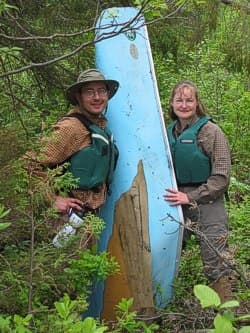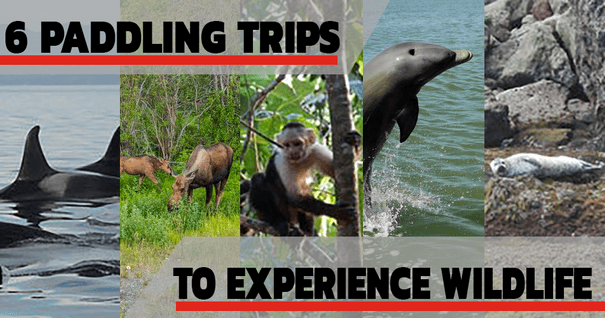Playing It Safe
I figure I've guided around 80 canoe trips in Canada and Alaska. Personal injuries? Just one: a man broke two toes when he slipped on a rock while lining.

An impressive safety record? Not really. Many experienced wilderness paddlers boast similar results. Safety follows suit if you follow these rules:
RESPECT THE ABILITY OF YOUR CREW.
Say you encounter a mean rapid that has a grueling portage around it. One team wants to canoe the rapid, the other wants to portage it. Choose a plan that respects the ability of the least experienced member of your crew. Examples: Everyone portages the drop (my preference). Or, the pro's paddle their canoe AND the inexperienced team's canoe through the rapid. If the pro's paddle while the novices portage, the novices may be dog tired when they finish the carry while the pro's will be anxious to go--a possible stressful situation.
REDUCE YOUR DAILY MILEAGE.
The rule is 15 miles a day on a wild northern river, less where there are frequent rapids or portages. In my old age, 10 miles are a better plan. Profile the drop of any river you plan to canoe. My newly revised book, "The 30th Anniversary, Canoeing Wild Rivers" (formerly titled "Expedition Canoeing")/Falcon Books 2015, and "Basic Illustrated: Map & Compass" show how. Plan to portage (allow extra time!) any section that drops over 30 feet per mile. Nearly every wilderness canoeing disaster can be traced to pushing too hard to make up for lost time. Art Moffat's death by hypothermia (Dubawnt River, 1955) remains a poignant example. If you're serious about safety, you'll slow down and shorten your time on the water!
WAIT FOR A WINDOW.
It's late in the day and everyone is tired. You're 10 miles behind schedule so you battle a heavy headwind till dark and make five more miles. Then you crash and sleep till nine. Contrast this with an early camp, a good night's rest and a 6 A.M. start. In fair weather, you'll make 10 miles by nine. Prudent paddlers run when they can and rest when they can't. And they plan one day in five as down time for wind, weather and the unexpected.
DOWNGRADE YOUR SKILLS.
Accomplished canoeing friends who've paddled with me say I'm capable in much bigger drops than I have the courage to try. Perhaps. But testosterone and trouble go hand-in-hand, so a humble attitude is the best plan. LEARN TO BACKFERRY YOUR CANOE. Whitewater sport paddlers almost never backferry. Instead, they turn their hot little boats upstream and forward ferry to safety. But loaded wilderness canoes are usually too sluggish to perform this maneuver in time to avoid danger, so a backferry is the clear choice. You MUST have a competent backferry to safely canoe rapids in a heavily loaded canoe!
EQUIP YOUR CANOE WITH LINES.
If you can't run a rapid, perhaps you can line it. If you can't line it, portaging is the option. Lines may vary in length from a simple "grab loop" (on dedicated whitewater boats) to 20 feet or more for loaded tripping canoes. There's often a "sneak run" along the edge of rapids. Lines enable you to float the canoe down the sneak run while safely walking on shore. A wilderness canoe without lines is the mark of an inexperienced crew! I prefer 25 foot lines-much longer than that and tangles are problematic.
DON'T RELY ON TECHNOLOGY TO SAVE THE DAY.
Satellite phones and satellite messengers (SPOT, DeLorme inReach) have made trips much safer than those of decades ago. But they've also caused serious problems by providing an easy out when things get tough. The result is that many people are canoeing rivers that are beyond their skills, believing that if things go sour, help is just a phone call or text message away. Suppose your electronic toys can't get a signal or are damaged or lost in a canoe capsize? It happens! Those who rely on technology to save the day are not included on my canoe trips. And they shouldn't be on yours!
Cliff Jacobson is a professional canoe guide and outfitter for the Science Museum of Minnesota, a wilderness canoeing consultant, and the author of more than a dozen top-selling books on camping and canoeing. www.cliffcanoe.com
Related Articles
I wasn't sure what travel was going to look like this winter, if there would be any travel at all.…
Even if the promise of travel seems to have gone awry, the pull towards a warm, tropical paddle…
View all Kayaking Locations in Lake Tahoe ► ► All of our Lake Tahoe paddling locations are from…
Experience wildlife with this handful of paddling trips. Dolphins and monkeys and bears, oh my! If you…



